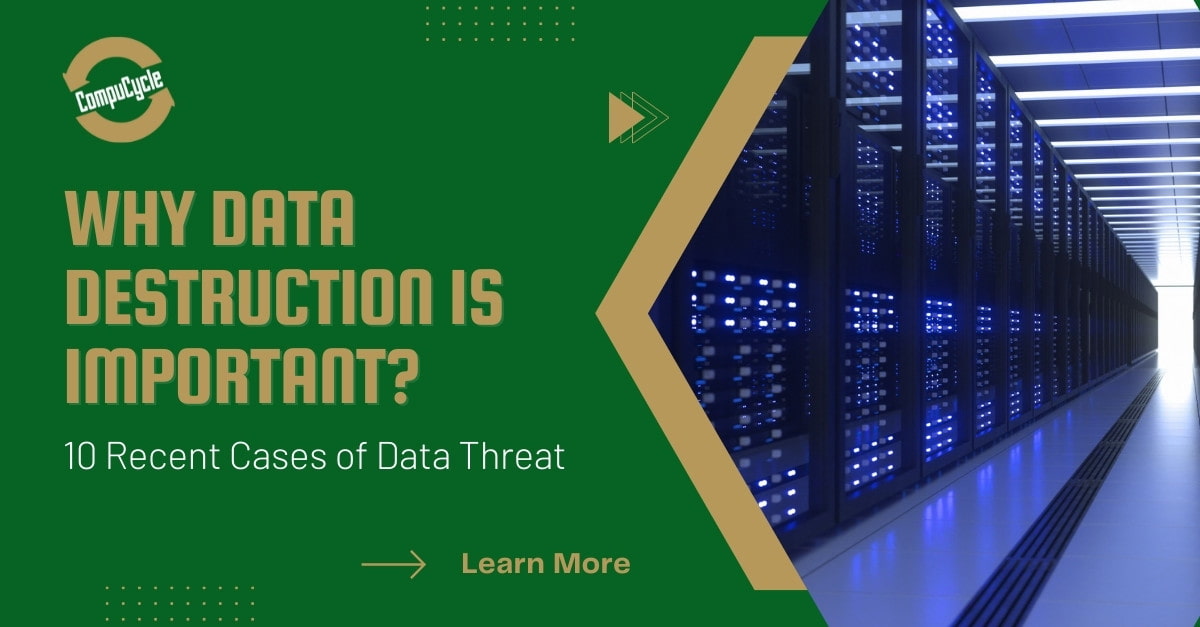Necessary Cyber Security Practices for Effective Data Destruction Techniques
Necessary Cyber Security Practices for Effective Data Destruction Techniques
Blog Article
Discovering the Importance of Information Devastation in the Context of Computer Safety Solutions and Protecting Confidential Information
In a period where information violations are significantly usual, the value of reliable information devastation can not be overemphasized. Organizations needs to embrace rigid procedures to make sure that sensitive information is not only protected during its lifecycle but also emphatically gotten rid of when no more essential. The approaches used for information elimination, combined with compliance to lawful criteria, play an essential function in maintaining discretion and trust fund. Nevertheless, the implications of these techniques prolong beyond plain compliance, affecting a business's track record and operational honesty in the digital industry. What strategies can companies carry out to enhance their data devastation procedures?
Recognizing Information Damage
Information damage is an important element of computer system security that involves the permanent removal of information from storage space gadgets to avoid unauthorized gain access to and prospective information breaches. In a significantly electronic landscape, organizations deal with heightened dangers connected with sensitive details being incorrectly accessed or manipulated. Efficient data devastation safeguards against these hazards, guaranteeing that personal dataâEUR" such as consumer info, copyright, and financial recordsâEUR" can not be recovered after disposal.
Understanding the value of information devastation expands past mere compliance with legal and governing structures; it is crucial for maintaining business integrity and depend on. When information is poorly managed or inadequately destroyed, the repercussions can be severe, including financial loss, reputational damage, and legal obligations.

Methods of Information Eradication

One prevalent approach is information wiping, which involves overwriting existing data with random patterns numerous times. This strategy makes the original information irretrievable, making it a preferred selection for organizations seeking to safeguard private info.
An additional approach is degaussing, which makes use of an effective magnetic field to disrupt the magnetic domains on storage devices, effectively removing the data. This method is especially efficient for magnetic media however is not suitable to solid-state drives.
Physical devastation is an additional durable approach, entailing the shredding or squashing of storage space tools. This approach assurances that information recuperation is virtually impossible, making it optimal for extremely delicate details.
Lastly, encryption can offer as a corresponding technique to information elimination. By securing information before removal, companies can include an additional layer of safety, making certain that also if remnants are recuperated, they remain inaccessible without the decryption trick. Each technique ought to be chosen based upon the degree of data sensitivity and the certain safety demands of the organization.
Legal Conformity and Information Safety
Organizations have to browse a complicated landscape of lawful demands connected to data protection, especially after executing techniques of data eradication. Different policies, such as the General Data Defense Guideline (GDPR) and the Medical Insurance Portability and Liability Act (HIPAA), impose strict standards on just how organizations should handle and get rid of of sensitive data. Failing to abide with these laws can bring about considerable legal effects, including considerable fines and reputational damage.
Information destruction processes must be diligently recorded to show compliance with suitable laws and requirements. This documents not only offers as evidence of adherence to legal responsibilities yet also shows a dedication to safeguarding sensitive details. Organizations should additionally establish clear plans concerning information retention and destruction timelines, ensuring that data is not held longer than essential.

Additionally, normal audits and analyses of data damage methods are vital to keep compliance and adjust to progressing lawful frameworks (data destruction). By proactively attending to legal needs, organizations can mitigate dangers connected with information violations and show their dedication to information safety. Ultimately, prioritizing legal compliance in data damage procedures is not just a governing commitment, but a basic facet of a robust data protection approach
Effect on Company Credibility
The reputation of an organization can be dramatically affected by additional resources its method to information devastation and administration. In today's digital landscape, where information violations can take place anytime, the failing to effectively take care of delicate details can bring about serious repercussions. Organizations that inadequately manage data destruction danger subjecting private customer details, which not only goes against privacy regulations yet also deteriorates depend on amongst customers and stakeholders.
A damaged track record can result in reduced consumer loyalty, as clients end up being reluctant to engage with an organization that has shown neglect in protecting their data. Unfavorable attention surrounding a data breach can have a long lasting impact, as possible consumers could be deterred by the viewed absence of protection. This can lead to a direct decline in earnings and market share.
Furthermore, organizations that prioritize information destruction as part of their safety and security strategy can enhance their track record by showcasing their commitment to protecting sensitive info. By taking on strict information management techniques, companies can not just minimize threats yet additionally place themselves as credible entities in their particular markets, thus strengthening their overall brand photo.

Finest Practices for Secure Disposal
Carrying out best practices for secure disposal of information is vital for reducing risks linked with data violations and making sure compliance with personal privacy guidelines. Organizations ought to take on a detailed data disposal plan that describes treatments for both digital and physical information destruction.
For physical information storage tools, such as hard drives, shredding or degaussing is advised to avoid data healing. Additionally, companies should preserve a chain of custodianship documentation during the disposal procedure, guaranteeing liability and traceability of disposed products.
For digital data, making use of software application that sticks to market standards for data cleaning is essential. This software program ought to overwrite existing information several times, making recovery practically difficult. It is additionally essential to validate the performance of the data damage procedure through audits or third-party evaluations.
Educating employees on protected disposal methods includes another layer of protection, as human mistake can frequently This Site cause information direct exposure. Frequently updating and evaluating disposal policies makes sure placement with advancing regulations and technical advancements. By executing these finest methods, companies can dramatically lower the risk of unauthorized data gain access to and improve their general data security method.
Final Thought
Finally, information devastation is a basic aspect of computer system security services that ensures the defense of personal details from unauthorized accessibility. Applying reliable approaches of information obliteration, sticking to lawful conformity, and identifying the influence on service online reputation are vital elements of a comprehensive data protection approach. By taking on best methods for secure visit site disposal, companies can promote count on with clients and guard delicate data, inevitably adding to a more safe and secure electronic landscape.
In an era where information breaches are increasingly usual, the importance of effective information destruction can not be overemphasized.Data devastation is an essential element of computer safety that involves the irreversible elimination of information from storage tools to stop unapproved gain access to and potential information breaches. Organizations needs to likewise develop clear policies pertaining to data retention and devastation timelines, making sure that data is not held longer than needed.
By proactively dealing with lawful requirements, organizations can minimize dangers linked with data breaches and show their commitment to information security (data destruction). Eventually, focusing on legal compliance in information destruction processes is not simply a regulatory responsibility, yet a fundamental aspect of a robust information security technique
Report this page